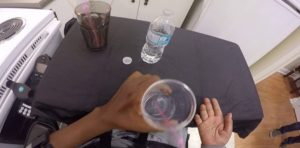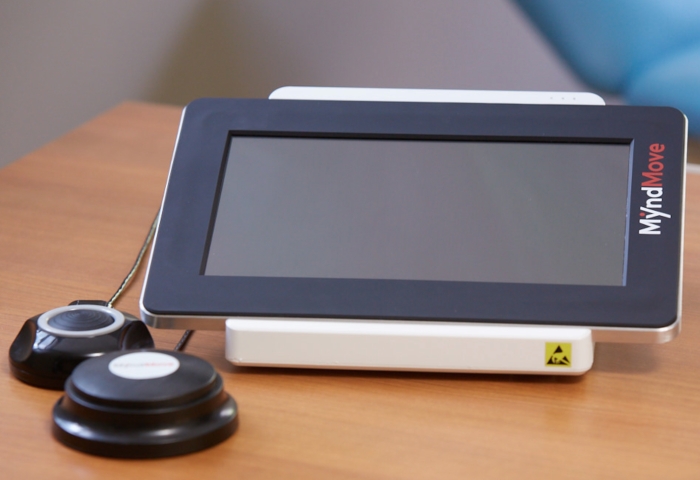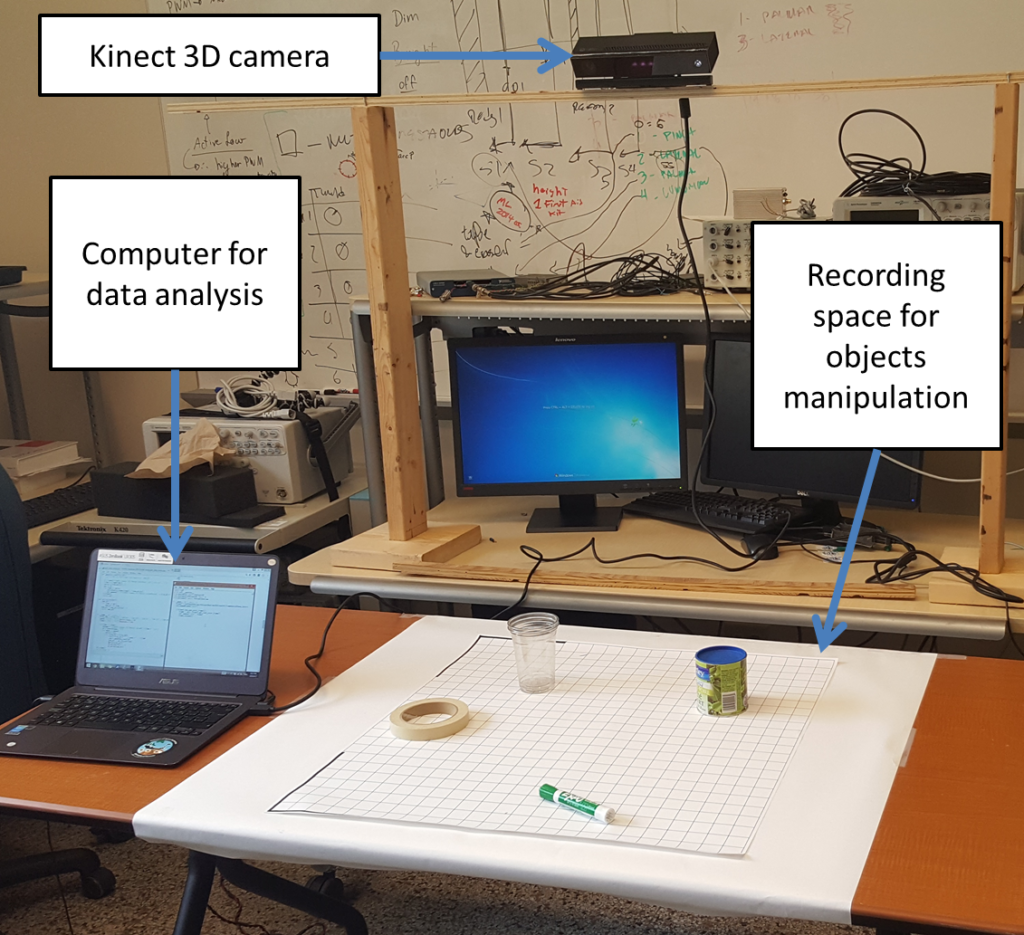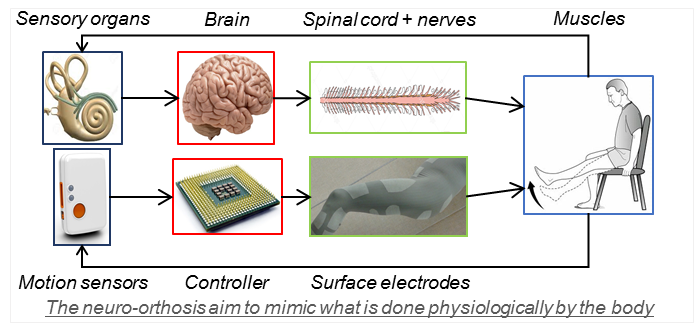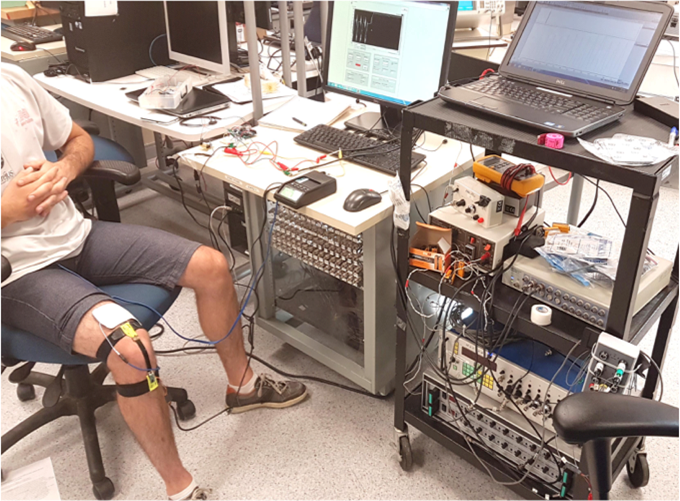MyndMove
Milos R. Popovic
MyndMove is a non-invasive therapy that combines patient participation, therapist expertise and the MyndMove functional electrical stimulation (FES) device to restore voluntary hand and arm function in patients suffering from upper-limb paralysis. The MyndMove device is a single system comprised of several parts:
- embedded stimulation protocols that can elicit over 30 different reaching and grasping movements
- an 8 channel stimulator that can stimulate up to 8 different muscle groups in a single stimulation protocol
- an intuitive user interface allowing therapists to select and deliver personalized therapy
MyndMove is Manufactured by our start-up company MyndTec Inc., and it is Health Canada and US FDA Approved.
Project Publications
- N. Kapadia, M.R. Popovic. Functional Electrical Stimulation Therapy for Grasping in Spinal Cord Injury: An Overview. Topics in Spinal Cord Injury Rehabilitation. 2011:17:1-70.
- N. Kapadia, B. Shaghayegh, M.R. Popovic. Influence of Different Rehabilitation Therapy Models on Patient Outcomes: Hand Function Therapy in Individuals with Incomplete SCI. The Journal of Spinal Cord Medicine. 2014:0:0-1.
- N. Kapadia, V. Zivanovic, J. Furlan, B.C. Craven, C. McGillivray, M.R. Popovic. Functional Electrical Stimulation Therapy for Grasping in Traumatic Incomplete Spinal Cord Injury: Randomized Control Trial. Artificial Organs. 2011:35(3):212-216.
- N. Kapadia, V. Zivanovic, M.R. Popovic. Restoring Voluntary Grasping Function in Individuals with Incomplete Chronic Spinal Cord Injury: Pilot Study. Topics in Spinal Cord Injury Rehabilitation. 2013:19:4-279.
- N. Kawashima, M.R. Popovic, V. Zivanovic. Effect of Intensive FES Therapy on Upper-Limb Motor Recovery After Stroke. Physiotherapy Canada. 2013:65(1):20-28.
- M.R. Popovic, N. Kapadia, V. Zivanovic, J. Furlan, C. Craven, C. McGillivray. Functional Electrical Stimulation Therapy of Voluntary Grasping Versus only Conventional Rehabilitation for Patients with Subacute Incomplete Tetraplegia: A Randomized Clinical Trial. Neurorehabilitation and Neural Repair. 2011:25:5-433.
- M.R. Popovic, T. Thrasher, M. Adams, V. Takes, V. Zivanovic, M. Tonack. Functional Electrical Therapy: Retraining Grasping in Spinal Cord Injury. Spinal Cord. 2006:44-143.
- T. Trasher, V. Zivanovic, W. Mcllroy, M.R. Popovic. Rehabilitation of Reaching and Grasping Function in Severe Hemiplegic Patients Using Functional Electrical Stimulation Therapy. Neurorehabilitation and Neural Repair. 2008:22:706-13.
FES Garment Study
Milos R. Popovic
REL is working to develop a new generation of stimulation device: the FES garments.
Those shirts and pants made of conductive and non-conductive fabric are currently designed with the help of end-users.
They will also be tested soon with stroke-survivors and individuals with spinal-cord injury.
Additionally, several instrumentation and stimulation designs, both open-loop and closed-loop, will be experimented with able-bodied participants.
Project Publications
- Moineau, C. Marquez-Chin, M. Alizadeh-Meghrazi, G. Stefan, K. Masani, M.R. Popovic, “Design of garment devices to deliver functional electrical stimulation in individuals with neurological paralysis,” Rehab Week 2017 – 21st International Functional Electrical Stimulation Society Conference, London, UK, July 17-21, 2017.
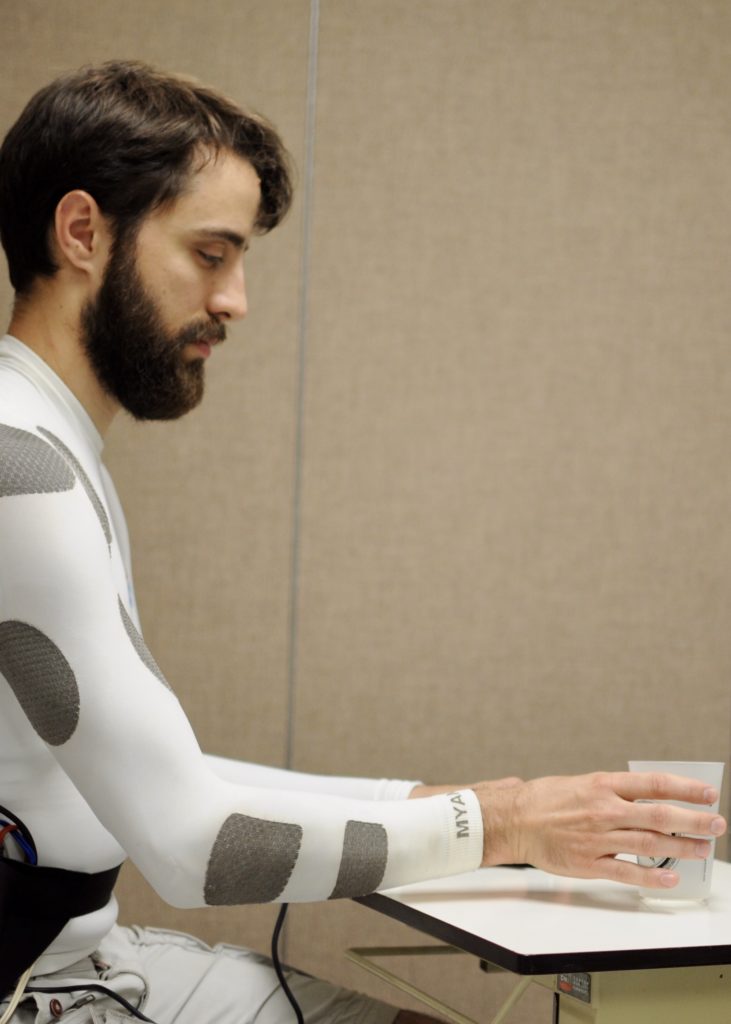
Hand function assessment technology
Jose Zariffa
The restoration of upper limb function is usually rated as the top priority by quadriplegic individuals. In order to develop effective new rehabilitation interventions and improve outcomes, it is important to measure and track hand function on a regular basis throughout the rehabilitation process. Because of the enormous complexity of the human hand, creating sensors that can accurately quantify its function is a significant technical challenge. We are developing systems based on wearable cameras and machine learning that can be used to track hand and upper limb function throughout the rehabilitation process, from the clinic to the home. This information can then be used to develop individualized and responsive rehabilitation programs. Publications:- Bandini, M. Dousty, S.L. Hitzig, B.C. Craven, S. Kalsi-Ryan, J. Zariffa. “Measuring hand use in the home after cervical spinal cord injury using egocentric video.” Journal of Neurotrauma, 2022, in press.
- Bandini, S. Kalsi-Ryan, B.C. Craven, J. Zariffa, S.L. Hitzig, “Perspectives and recommendations of individuals with tetraplegia regarding wearable cameras for monitoring hand function at home: insights from a community-based study”, Journal of Spinal Cord Medicine, 44:sup1, S173-S184, 2021.
- Tsai, R.H. Wang, J. Zariffa, “Identifying hand use and hand roles after stroke using egocentric video.”, IEEE Journal of Translational Engineering in Health and Medicine, 9:2100510, 2021.
- Tsai, A. Bandini, R.H. Wang, J. Zariffa. “Capturing Representative Hand Use at Home Using Egocentric Video in Individuals with Upper Limb Impairment.” J. Vis. Exp. (166):e61898, 2020.
- Dousty, J. Zariffa, “Tenodesis Grasp Detection in Egocentric Video”, IEEE Journal of Biomedical and Health Informatics, 25(5): 1463-1470, 2021.
- J. Visée, J. Likitlersuang, J. Zariffa, “An Effective and Efficient Method for Detecting Hands in Egocentric Videos for Rehabilitation Applications”, IEEE Transactions on Neural Systems and Rehabilitation Engineering, 28(3):748-755, 2020 (also available on arXiv:1908.10406).
- Likitlersuang, E.R. Sumitro, T. Cao, R.J. Visée, S. Kalsi-Ryan, J. Zariffa. “Egocentric Video: A New Tool for Capturing Hand Use of Individuals with Spinal Cord Injury at Home,” Journal of Neuroengineering and Rehabilitation, 16(1):83, 2019.
